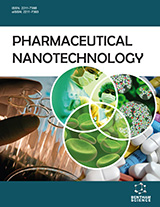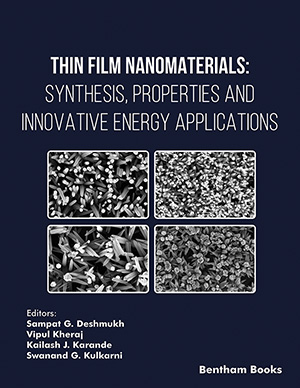
Abstract
Background: The brain is a vital and composite organ. By nature, the innate make-up of the brain is such that in anatomical parlance, it is highly protected by the “Blood-Brain Barrier”, which is a nexus of capillary endothelial cells, basement membrane, neuroglial membrane and glialpodocytes. The same barrier, which protects and isolates the interstitial fluid of the brain from capillary circulation, also restricts the therapeutic intervention. Many standing pharmaceutical formulations are ineffective in the treatment of inimical brain ailments because of the inability of the API to surpass and subsist inside the Blood Brain Barrier.
Objective: This is an integrated review that emphasizes on the recent advancements in brain-targeted drug delivery utilizing nanodiamonds (NDs) as a carrier of therapeutic agents. NDs are a novel nanoparticulate drug delivery system, having carbon moieties as their building blocks and their surface tenability is remarkable. These neoteric carbon-based carriers have exceptional, mechanical, electrical, chemical, optical, and biological properties, which can be further rationally modified and augmented.
Discussion: NDs could be the next“revolution ”in the field of nanoscience for the treatment of neurodegenerative disorders, brain tumors, and other pernicious brain ailments. What sets them apart from other nanocarriers is their versatile properties like diverse size range and surface modification potential, which makes them efficient enough to move across certain biological barriers and offer a plethora of brain targeting and bioimaging abilities.
Conclusion: The blood-brain barrier (BBB) poses a major hurdle in the way of treating many serious brain ailments. A range of nanoparticle based drug delivering systems have been formulated, including solid lipid nanoparticles, liposomes, dendrimers, nanogels, polymeric NPs, metallic NPs (gold, platinum, andironoxide) and diamondoids (carbonnanotubes). Despite this development, only a few of these formulations have shown the ability to cross the BBB. Nanodiamonds, because of their small size, shape, and surface characteristics, have a potential in moving beyond the diverse and intricate BBB, and offer a plethora of brain targeting capabilities.
Keywords: Blood brain barrier, nanodiamonds, brain targeting, bioimaging, nanothernostics, alzheimer’s, glioblastomas, neuro- degenerative diseases.
[http://dx.doi.org/10.3762/bjnano.11.72] [PMID: 32551212]
[http://dx.doi.org/10.1007/s11030-016-9715-6] [PMID: 28050687]
[http://dx.doi.org/10.1038/nrd.2015.21] [PMID: 26794270]
[http://dx.doi.org/10.7150/thno.21254] [PMID: 29556336]
[http://dx.doi.org/10.1080/03602530801952617] [PMID: 18464048]
[http://dx.doi.org/10.1097/00002030-200307040-00008] [PMID: 12824785]
[http://dx.doi.org/10.1152/ajprenal.00123.2002] [PMID: 12676733]
[http://dx.doi.org/10.1016/0301-0082(95)00046-1] [PMID: 8735879]
[http://dx.doi.org/10.1152/ajpheart.1990.258.5.H1261] [PMID: 2337161]
[http://dx.doi.org/10.1016/S0006-8993(99)02189-7] [PMID: 10642846]
[http://dx.doi.org/10.3389/conf.fphar.2010.60.00135]
[http://dx.doi.org/10.1016/j.neuropharm.2016.08.025] [PMID: 27561970]
[http://dx.doi.org/10.1038/jcbfm.2013.213] [PMID: 24346691]
[http://dx.doi.org/10.4103/2277-9175.148261] [PMID: 25625110]
[http://dx.doi.org/10.1073/pnas.95.8.4607]
[http://dx.doi.org/10.1016/j.jpha.2019.09.003] [PMID: 32123595]
[http://dx.doi.org/10.1021/nn401196a] [PMID: 23560817]
[http://dx.doi.org/10.4081/oncol.2019.417] [PMID: 31410248]
[http://dx.doi.org/10.1063/1.4809823]
[http://dx.doi.org/10.1126/sciadv.1500439]
[http://dx.doi.org/10.2147/IJN.S37348.Epub] [PMID: 23326195]
[http://dx.doi.org/10.1166/jnn.2015.9735] [PMID: 26353604]
[http://dx.doi.org/10.1016/j.ijpharm.2019.01.056] [PMID: 30721725]
[http://dx.doi.org/10.1016/j.ijpharm.2020.119701] [PMID: 32736018]
[http://dx.doi.org/10.1021/ac048971a] [PMID: 15623304]
[http://dx.doi.org/10.1038/nature07278] [PMID: 18833276]
[http://dx.doi.org/10.1021/nn900865g]
[http://dx.doi.org/10.1126/scitranslmed.3005872]
[http://dx.doi.org/10.1016/j.biomaterials.2010.08.090] [PMID: 20869765]
[http://dx.doi.org/10.1021/nn9003617] [PMID: 21452865]
[http://dx.doi.org/10.1039/C8TB00508G] [PMID: 32254342]
[http://dx.doi.org/10.1002/smll.201902151]
[http://dx.doi.org/10.1002/smll.201902238]
[http://dx.doi.org/10.1039/C8NR07828A]
[http://dx.doi.org/10.1007/s00216-015-8849-1]
[http://dx.doi.org/10.4155/tde.14.17] [PMID: 24998271]
[http://dx.doi.org/10.3390/mi9050247] [PMID: 30424180]
[http://dx.doi.org/10.1016/j.cocis.2019.02.014]
[http://dx.doi.org/10.1088/0953-8984/10/35/024]
[http://dx.doi.org/10.1088/0957-4484/20/23/235602] [PMID: 19451687]
[http://dx.doi.org/10.1039/JM9960600595]
[http://dx.doi.org/10.1063/1.105434]
[http://dx.doi.org/10.1016/S0168-583X(00)00603-0]
[http://dx.doi.org/10.1038/35077031]
[http://dx.doi.org/10.1134/1.1710678]
[http://dx.doi.org/10.1016/j.heliyon.2019.e01682] [PMID: 31193105]
[http://dx.doi.org/10.1016/j.msec.2020.110996]
[http://dx.doi.org/10.1016/j.msec.2018.12.073] [PMID: 30678981]
[http://dx.doi.org/10.1116/1.5089898] [PMID: 31032146]
[http://dx.doi.org/10.1146/annurev-bioeng-071811-150124] [PMID: 22524388]
[http://dx.doi.org/10.1021/acsomega.7b00339] [PMID: 30023673]
[http://dx.doi.org/10.1002/smll.201902992] [PMID: 31465151]
[http://dx.doi.org/10.1016/j.mod.2012.11.006] [PMID: 23246917]
[http://dx.doi.org/10.1186/1475-2867-13-89] [PMID: 24004445]
[http://dx.doi.org/10.1021/mp400213z] [PMID: 23941665]
[http://dx.doi.org/10.1021/nn503491e] [PMID: 25437772]
[http://dx.doi.org/10.1200/JCO.2017.72.8089]
[http://dx.doi.org/10.1158/1078-0432.CCR-18-0491] [PMID: 29691293]
[http://dx.doi.org/10.1016/j.biomaterials.2014.03.041] [PMID: 24720879]
[http://dx.doi.org/10.1038/s41598-020-68017-y] [PMID: 32647151]
[http://dx.doi.org/10.1002/cncr.20073]
[http://dx.doi.org/10.1016/S1470-2045(09)70025-7] [PMID: 19269895]
[http://dx.doi.org/10.1016/j.drudis.2018.10.012] [PMID: 30408527]
[http://dx.doi.org/10.1016/j.actbio.2019.01.020] [PMID: 30654213]
[http://dx.doi.org/10.2217/nnm-2018-0330] [PMID: 30676239]
[http://dx.doi.org/10.1016/j.nano.2013.07.013] [PMID: 23916888]
[http://dx.doi.org/10.1212/WNL.0000000000000610]
[http://dx.doi.org/10.1016/j.jconrel.2020.01.044]
[http://dx.doi.org/10.3390/biomimetics4010003] [PMID: 31105189]
[http://dx.doi.org/10.1172/JCI200317522] [PMID: 12511579]
[http://dx.doi.org/10.1038/nature20411] [PMID: 27830812]
[http://dx.doi.org/10.1289/ehp.7567] [PMID: 16140637]
[http://dx.doi.org/10.1016/j.jalz.2009.06.003] [PMID: 19751922]
[http://dx.doi.org/10.1038/nrn3505] [PMID: 23674053]
[http://dx.doi.org/10.1126/science.1090349] [PMID: 14593169]
[http://dx.doi.org/10.1038/nnano.2016.260] [PMID: 27893730]
[http://dx.doi.org/10.1186/s12951-018-0385-7]
[http://dx.doi.org/10.1136/bmj.319.7213.807] [PMID: 10496822]
[http://dx.doi.org/10.1007/s12035-016-9762-0] [PMID: 26897372]
[http://dx.doi.org/10.3389/fneur.2014.00167] [PMID: 25250012]
[http://dx.doi.org/10.1038/nm.1912] [PMID: 19198615]
[http://dx.doi.org/10.1002/ana.410230616] [PMID: 2457353]
[http://dx.doi.org/10.1016/S0140-6736(76)93095-6] [PMID: 56538]
[http://dx.doi.org/10.3389/fnmol.2016.00096] [PMID: 27790089]
[http://dx.doi.org/10.1186/s12951-016-0176-y] [PMID: 27036406]
[http://dx.doi.org/10.1038/srep06919] [PMID: 25370150]
[http://dx.doi.org/10.2217/nnm-2020-0091] [PMID: 32662335]
[http://dx.doi.org/10.1039/D0NR06765B] [PMID: 33527933]
[http://dx.doi.org/10.1021/acsnano.7b04850] [PMID: 29111670]
[http://dx.doi.org/10.1039/C9NR10701K]
[http://dx.doi.org/10.1038/s41598-017-16703-9] [PMID: 29371638]
[http://dx.doi.org/10.1002/anie.201905997] [PMID: 31246341]





























